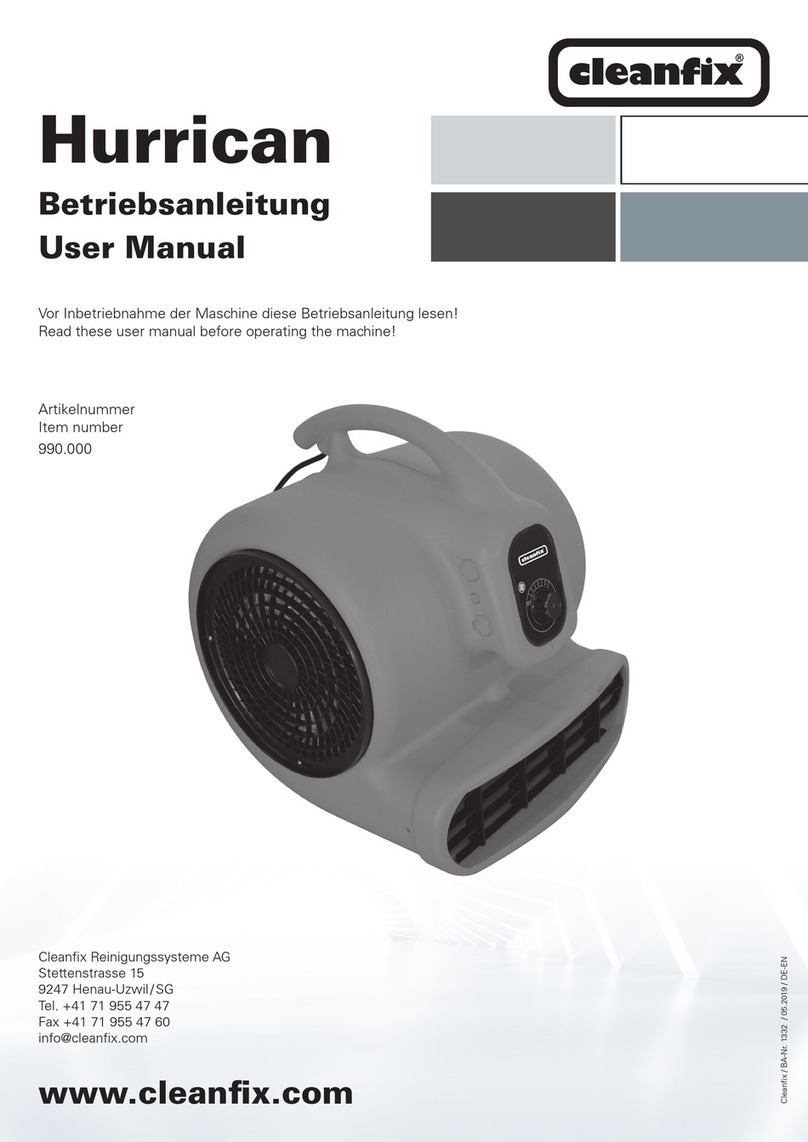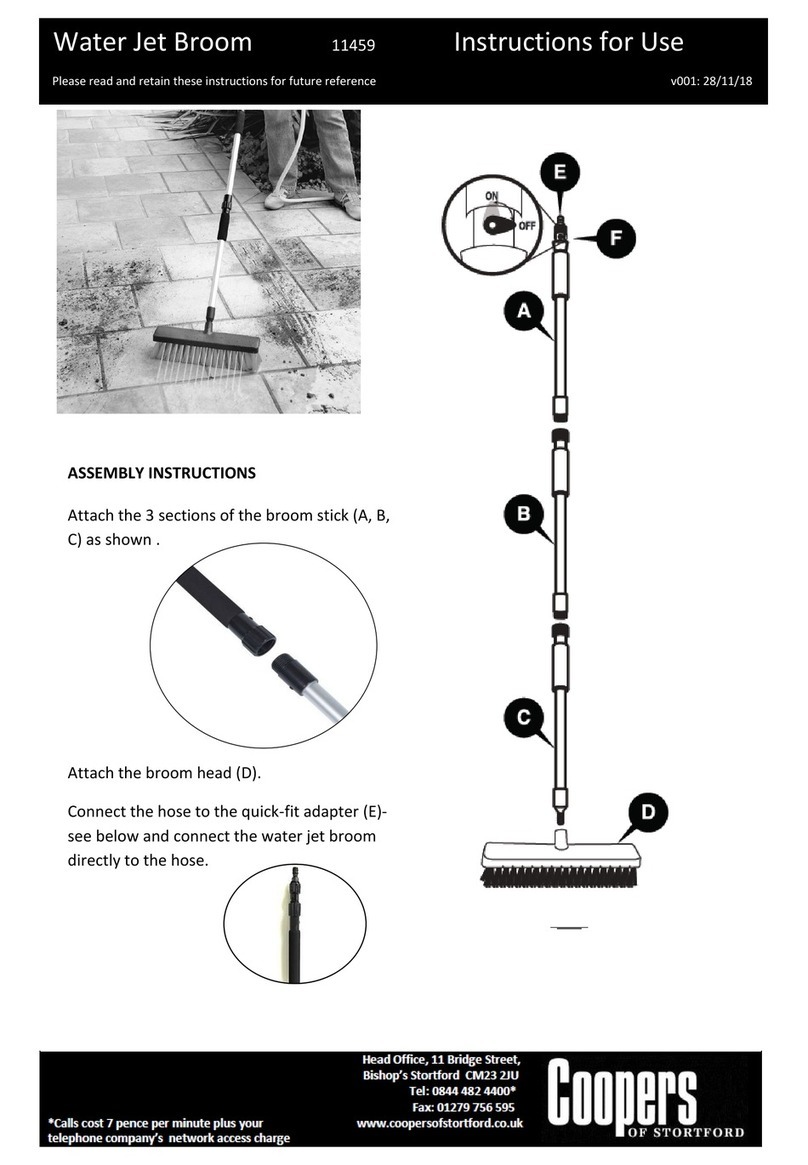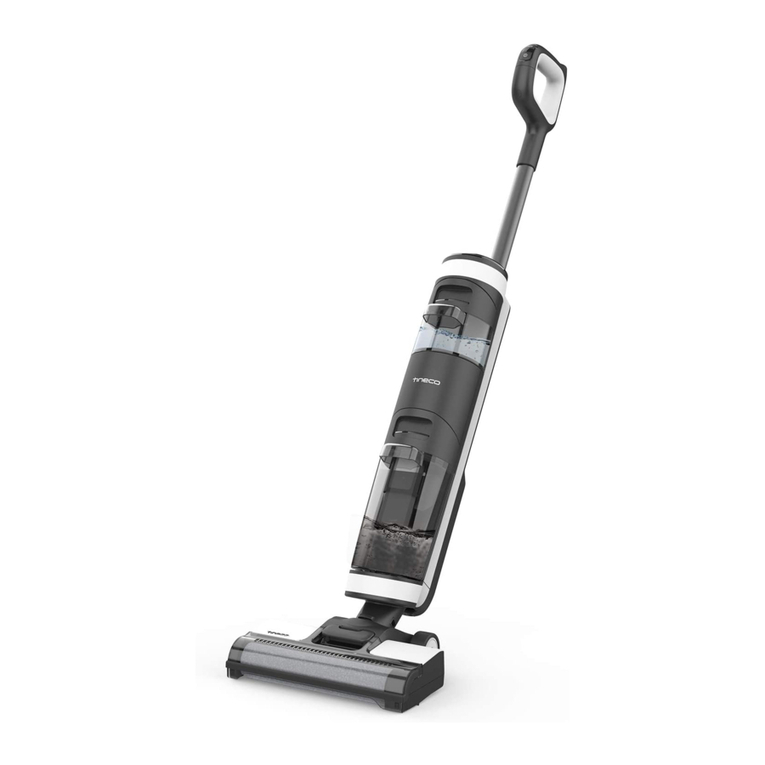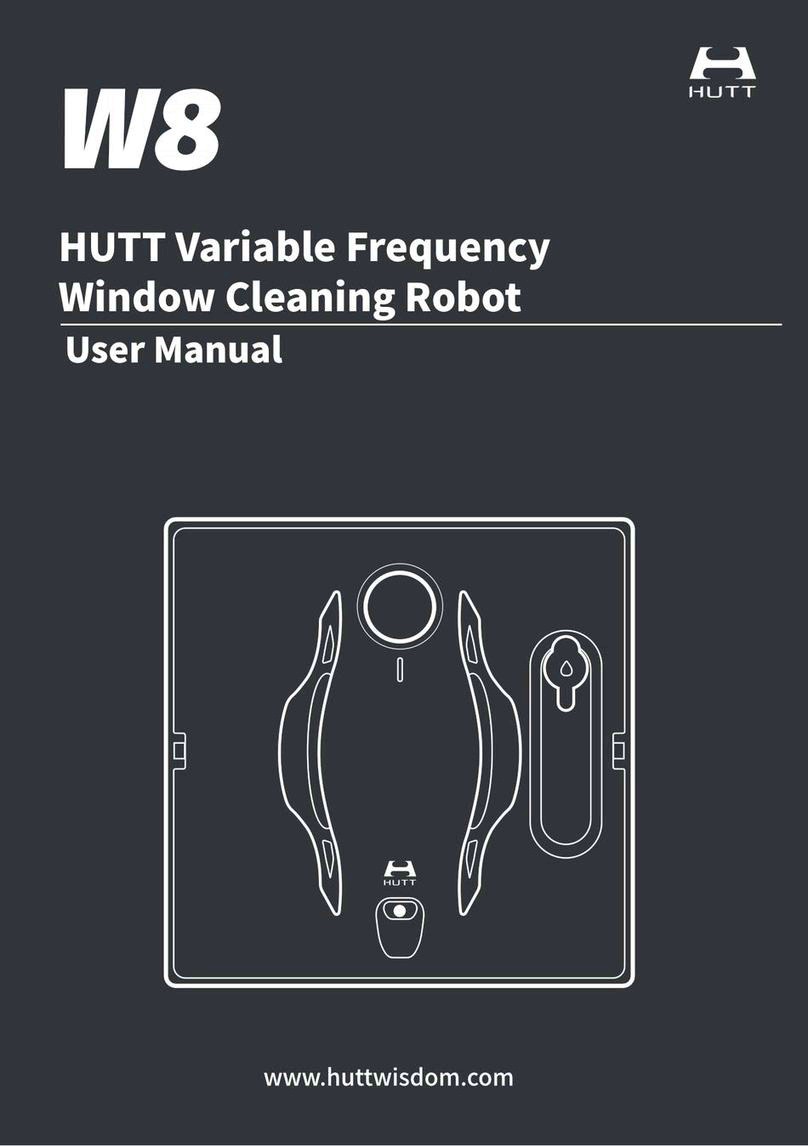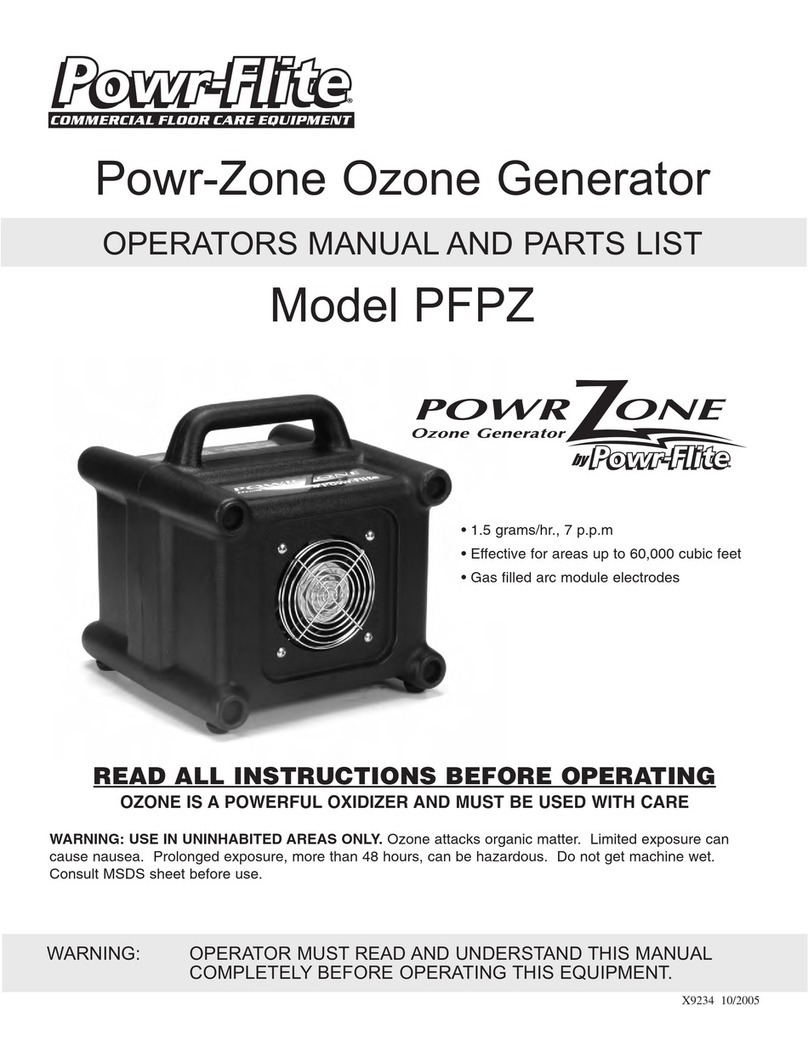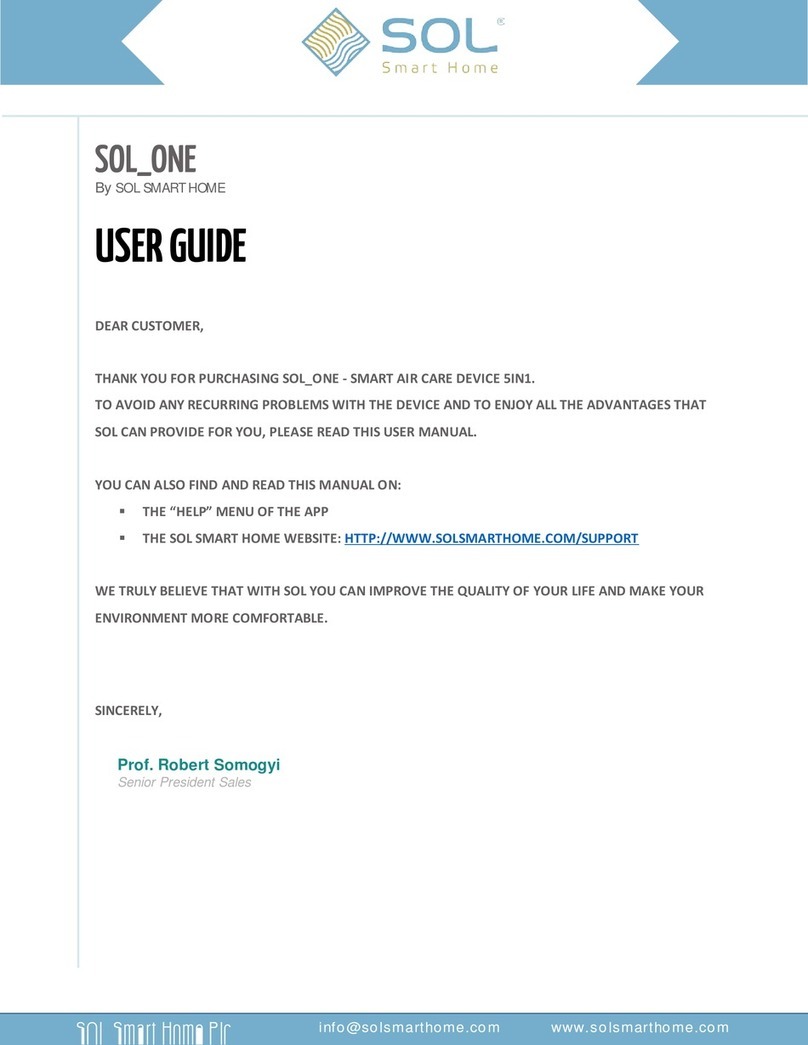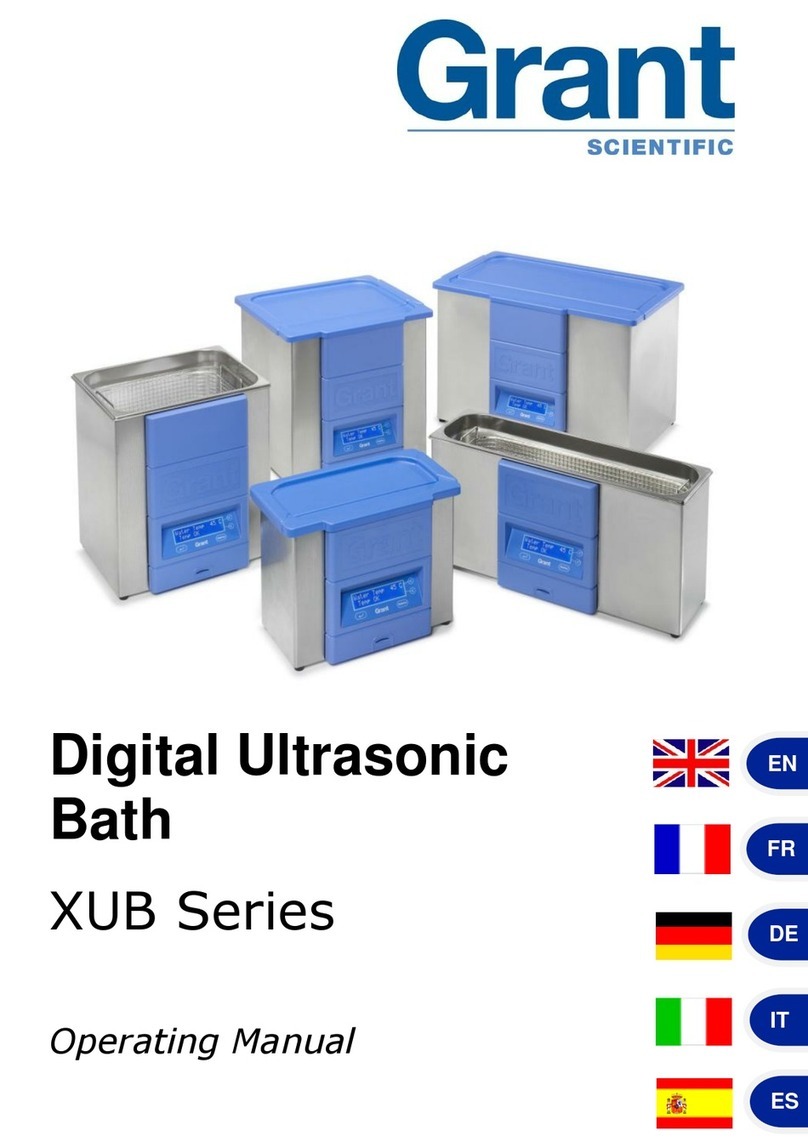ENDEAVOUR ET3203A User manual

FEATURES
Die casting stainless steel tank
Industrial grade integrated circuit
0~80℃temperature range
1~99 minutes working time
Degassing and degreasing function
33KHz for coarse rinse and 40KHz for intensive rinse
Power sweep to prevent ultrasonic fatigue
Auto Stand-by, sleep, and wake up by one key-press Mode
Digital controller of high-precision and long service-life
Thank you for purchasing thisultrasonic cleaner. Please take some time to read these operating instructions before use
and keep them for future reference. Failure to follow these instructions may lead to serious damage to the product.
ULTRASONIC CLEANER
ET3203A
USER MANUAL

2
ULTRASONIC PRINCIPLE
PREPARATION:
1. Carefully unpack the cleaner, remove all packing materials and check whether any
parts have become loose or damaged during transit.
Contents:
a: Main machine b: Sound proof lid c: Power lead
d: Outlet filter e: Mesh basket (Optional) f: Manual
2. Place the cleaner on a flat, clean surface and ensure that the cooling fan will get
adequate ventilation, that all controls are set to off, and the drain tap is closed.
3. Ensure that the power lead is securely plugged into the cleaner, and that no part of
the lead is likely to contact with moisture.
4. Carefully fill at least 7cm depth of the tank with a solvent solution. Based on
cleaning requirements, we recommend using a small amount of cleaning solution
because this will help increase the cleaning performance. Now the cleaner is ready
for use.
SAFETY PRECAUTIONS
Ultrasonic cleaning is based on the cavitation effect caused by
high frequency ultrasonic wave vibrations in the fluid. Microscopic
bubbles are formed, and then implode violently causing the
cavitation which create an intense scrubbing action on the
surface of the item being cleaned. The bubbles are small enough
to penetrate microscopic crevices, cleaning them thoroughly and
consistently.
Ultrasonic cleaning is extremely effective at removing dirt and
grime which would normally require tedious manual cleaning. It
has been used to clean a wide variety of instruments and
mechanical parts such as carburetors, returning them to almost
“like new” condition without damage to delicate components.
Attention
A) While the machine is working normally, the syntony of the ultrasonic wave and tank
gives a well-proportioned sound with no shudder on the surface of the water but sprays
generated by the tiny bubbles. If there are discontinuous surges, please add or reduce a
little of washing solution in the tank to stop the surges, which is good for achieve a better
cleaning effect.
B) Please don’t use the machine for a continuous long period (not more than 60 minutes)
as this can raise the temperature of the case and accelerate the burn-in process of internal
electronic components.

3
This device cannot be used by individuals with limited physical knowledge, or the
mental disabled, or those lacking experiences or knowledge, such as children, unless
they are supervised by an individual who can take charge of their safety or have
received training in operating the device .
1) DO NOT run the cleaner continuously for more than one hour at a time because it
can damage the internal components.
2) DO NOT operate the unit without fluid in the tank. Always ensure that the fluid is no
higher than the max mark and no lower than the minimum depth of 7cm.
3) DO NOT drop any item into the tank because it may damage the transducer. Always
place items gently into the tank and use the basket whenever possible.
4) The more items you place in the cleaning bath, the less cleaning efficiency you can
expect. Leaving enough space between items rather than overlapping them is
recommended.
5) Do keep the lid on during use. This will prevent splashes and reduce evaporation
of the fluid.
6) Never immerse the machine or power cord in water or other liquid.
7) DO NOT touch the power plug with wet hands, especially when inserting or
removing the plug.
8) DO NOT touch the unit if the machine has fallen into water during operation.
Remove the power plug from the socket first.
9) DO NOT disassemble the machine if you are not a professional repairer.
10) UNPLUG the power source while filling or emptying the tank.
11) DO NOT spray water or liquid over the device and the control panel.
12) DO NOT operate the cleaner without proper grounding.
13) DO NOT place the device on a soft surface where the vents can be blocked.
14) Always turn the heater off after using as leaving it on can make the fluid evaporate
and damage internal components.
15) Take care when adding or removing items from the cleaning tank as the splashed
fluid is likely to be hot and may damage internal components. Any splashed fluid
must be dried immediately.
16) In case of emergency or failure to follow the aforementioned items, disconnect the
mains supply by removing the plug from the mains socket.
Keep away from children!
Please read the following items very carefully as failure to
comply with them may invalidate your warranty.

4
APPLICATIONS
This list is almost endless. Provided the product is non porous and can normally be
immersed in water, they can be thoroughly cleaned. Here are some examples:
•Jewelry especially gold, silver & platinum
•Watchstraps
•Coins and other collectibles
•PCB Boards etc
•Engine/Model parts
•Toothbrushes & Dentures
•Electrical components
•Make-up cases
•Diesel injection pumps
•Printer heads and toner cartridges
•Motorcycle radiators
•Vehicle differentials
•Milking parlor equipment
•Golf clubs, grips & golf balls
•Horse bits, stirrups & horse brasses
•Tattoo needles
•Surgical equipment
•Motorcycle engine crank cases
•Engine cylinder heads
•Turbochargers
•Bicycle derailleurs
•Knives, bayonets and other militaria
•Gun and gun components
Ultrasonic cleaning is not recommended to be used to clean the following gemstones:
Opal, Pearl, Emerald, Tanzanite, Malachite, Turquoise, Lapis and Coral.

5
CONTROL PANEL
Ultrasonic Time Control “+”and “-”
Ultrasonic frequency 40Khz (Fullwave): For blind holes cleaning
Ultrasonic frequency 33Khz (Semiwave) : For surface cleaning
Degas function: If you press switch 2 times, it will start degassing
Power sweep: 33Khz & 40Khz, is used to prevent ultrasonic fatigue if long time
ultrasonic cleaning in only one frequency.
Heating Switch
Temperature Control “+”and”-”
Ultrasonic Time Display
Preset Temperature Display
Actual Temperature Display

6
OPERATION
1. Fill the stainless steel tank with cleaning solution; Plug the power lead into
grounded outlet; After power-on, the temperature displays the actual environmental
temperature, LED displays 3 minutes (default ultrasonic time).
2. Time setting: Press the “TIME+/TIME- ”shortly at a time means time
increase/reduce 1min at a time, press and hold time switch continuously will
increase/reduce by 10mins. The cleaning stops when the timer counts down to 00:00. If
the unit needs to be stopped before this, press the “Ultrasonic frequency”button.
NOTE: Do not run the cleaner continuously for more than one hour
3. Temperature setting: Press “temperature+/temperature-”shortly at a
time means time increase or reduce 1℃at a time, press and hold time switch
continuously will increase/reduce by 10℃. Usually, the best cleaning temperature is
within a 40℃to 60℃range.
4. After time and heat setting, press “Heating” or “ultrasonic”button to start both
function. If press the “ultrasonic “again , the ultrasonic function will stop , and the heating
function will stop at the same time. If you want to keep heating, press the “heating”
button again.
5. Degas mode: work intermittently,i.e., 6s “ON”+ 2s “OFF”working mode. It can
clean items deeply and efficiently.
6. Empty the tank and clean both the outside and inside of the cleaner with a clean
and dry cloth for the next use.
NOTE: Do not pour water out until it’s cooled, because of hot water may injure you
and also empty burn will damage the machine itself.

7
DIFFERENT WAYS OF CLEANING
General Cleaning—use only water to clean under the temperature of about 50℃;
Enhanced Cleaning—add few drops of standard cleaning solutions, liquid soap, or
detergent, or any other non-acidic cleaning agents.
Extensive Cleaning--removing tarnish, carbon & rust from non-plated metals, it is
recommended to use specific cleaning solution associated with ultrasonic cleaners.
The cleaning solution will deteriorate in effectiveness over time and use. It is important
to regularly change the fluid and carefully wash the inside of the cleaning tank in order
to preserve the effectiveness and longevity of the cleaner. Do not use corrosive or
abrasive cleaning tools to clean the tank which must be wiped down and dried before it
can be re-connected to the electrical supply.
NOTE: If the machine starts to spark, smoke, smell of burnt electrics or displays any
other fault the operator must immediately stop the machine, isolate it from the
electrical supply and contact the supplier. It is dangerous to use it after that.
Advantages
Ultrasonic cleaning is widely used throughout industry to remove difficult contaminants
from the parts during or after manufacturing process which might require a stage of
cleaning before the next process. In general, if an item can be cleaned with liquid, it
can be cleaned much faster and more thoroughly with an ultrasonic cleaner. Compared
with traditional solvent/scrubbing, ultrasonic cleaners:
•Are more effective at removing contaminants;
•Are quicker to achieve a good cleaning effect;
•Save labour time of employees (and subsequent labor cost);
•Can heat the cleaning solutions to a suitable cleaning temperature so as to
enhance the cleaning efficiency;
•Have a digital controller of high-precision and a long service-life;
•Are environment friendly because of its recyclability.
WARNING : Strong acid or alkaline cleaning solution will cause corrosion, rust and
even puncture the tank or machine body. To solve this problem, please dilute the
solution to mild PH or use a special tank made of a specific-graded stainless steel, For
example: use SUS304 tank.

8
For Better cleaning effect:
●Immerse the items to be cleaned well into the water.
●Add a small amount of cleaning solution. To remove grease, a degreaser is
ideal. For carbon deposits, we recommend a specialized ultrasonic cleaning
powder.
●Make sure that there is enough space around each item in the tank. The more
items you place in the tank, the less efficiency you will achieve. It is not advised
to overlap items because the ultrasonic cleaning system cannot work well with
layered items.
●Use a basket. Do not put items directly into the bottom of the tank because that
is harmful for the inner tank. Especially a metal basket as it only absorbs about
8% ultrasonic energy.
●Choose a suitable temperature: Generally, the higher the temperature is, the
better cleaning effect of the ultrasonic cleaner. However, when temperature
exceed 70℃~80℃, cleaning effect will be reduced. So the best temperature
range we suggest is 40℃~60℃.
SPECIFICATIONS
Model
Tank Size
(mm)
Overall Size
(mm)
Volume
(L)
Power
(W)
FREQ.
(kHz)
Heating
(W)
Time
(mins)
Temp.
(℃)
ET3201A
240×140×100
270×170×240
3.2
120
33,40
33,40
100
1-99
0-80
ET3202A
300×240×150
330×270×310
10
240
300
1-99
0-80
ET3203A
500×300×200
550×330×360
30
600
500
1-99
0-80
This manual suits for next models
2
Table of contents
Popular Ultrasonic Jewelry Cleaner manuals by other brands

Makita
Makita DCL184 instruction manual

Tersano
Tersano iClean mini LQFC200 Important safety instructions

Makita
Makita CL114FD instruction manual
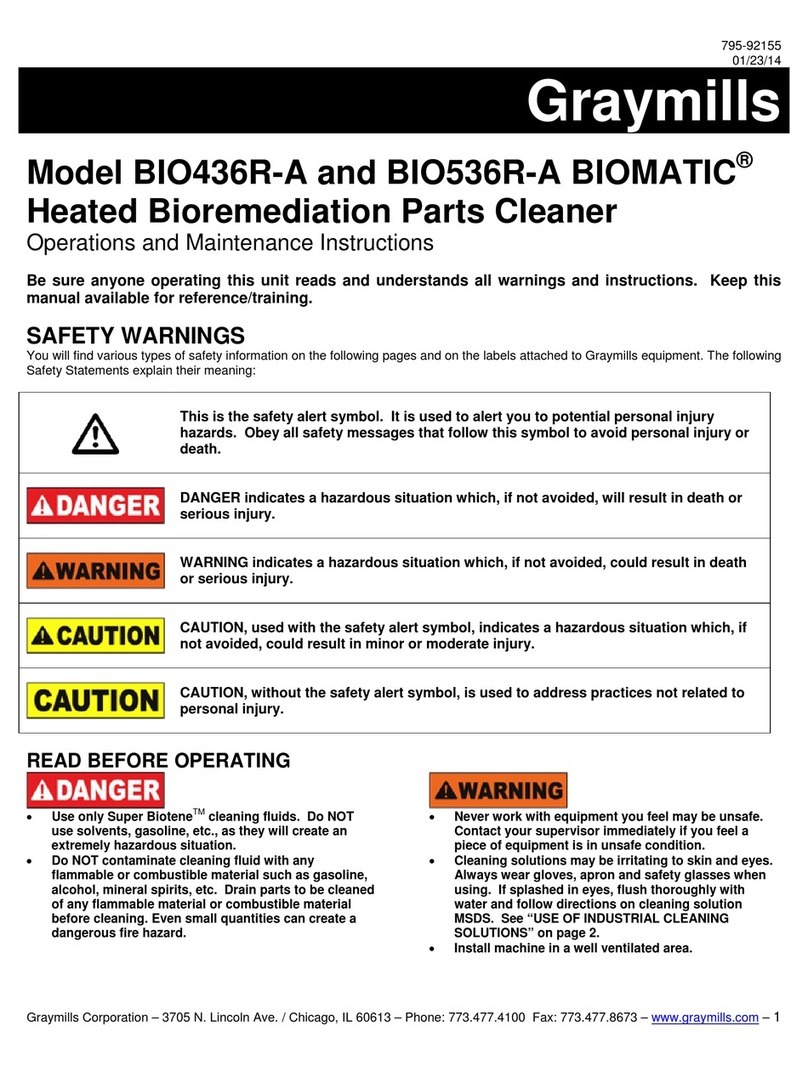
Graymills
Graymills BIOMATIC BIO436R-A Operation and maintenance instructions

Lyman
Lyman Turbo Sonic 6000 operating instructions

Oertzen
Oertzen E 1000 Operation manual
